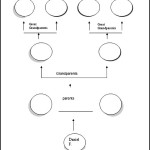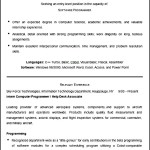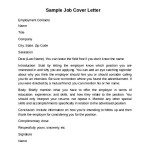Sample Letter Of Authorization Fillable Form
“`html
Sample Letter of Authorization: Fillable Form Explained
A Letter of Authorization (LOA) is a crucial document that grants someone the power to act on your behalf. It’s used in various situations, from authorizing a friend to pick up your mail to empowering a lawyer to represent you in court. A fillable LOA form simplifies the process of creating this document, allowing you to quickly and accurately input your information directly into the form fields. This article will delve into a sample fillable LOA form, explaining each section and providing guidance on how to properly complete it.
Understanding the Components of a Fillable LOA Form
A typical fillable LOA form usually includes the following sections:
1. Title and Introductory Statement
The form will usually begin with a clear title, such as “Letter of Authorization” or “Authorization Form.” Below the title, there’s often an introductory statement outlining the purpose of the document. For example: “This letter authorizes the person named below to act on my behalf regarding the specific matters described herein.” This sets the context for the authorization.
2. Grantor Information (Your Information)
This section requires your personal details as the person granting the authority. Expect to find fillable fields for:
- Full Name: Your complete legal name.
- Address: Your current residential address.
- Phone Number: A reliable phone number where you can be reached.
- Email Address: Your email address for communication.
- Date: The date you are signing the authorization letter. This is crucial for determining the validity period of the authorization.
3. Grantee Information (The Authorized Person’s Information)
This section requires the details of the person you are authorizing to act on your behalf. Look for fields like:
- Full Name: The complete legal name of the authorized individual.
- Address: The authorized person’s current address.
- Phone Number: A reliable phone number where they can be reached.
- Email Address: Their email address for communication.
Ensuring the accuracy of this information is paramount, as it clearly identifies who has been granted the authority.
4. Scope of Authorization (Specific Powers Granted)
This is arguably the most important section. Here, you precisely define what the authorized person is allowed to do on your behalf. The form may offer pre-defined options, such as:
- Banking Transactions: Withdrawing funds, depositing checks, accessing account information. Be very specific; for example, “To deposit checks into account number 123456789 only.”
- Medical Information Access: Accessing medical records, discussing treatment plans. Specify which medical providers are included and the time period covered.
- Property Management: Collecting rent, arranging repairs, signing leases. Specify the property address.
- Legal Representation: Representing you in a specific legal matter (e.g., a traffic violation). Clearly state the case name and number, if applicable.
- Mail Collection: Picking up mail from a specific address.
The form might also include a blank field allowing you to describe the scope of authorization in your own words. Use clear, unambiguous language. Avoid vague terms that could be misinterpreted. For example, instead of “Handle my finances,” specify “To pay bills from my checking account, up to $500 per month, for the purpose of utilities and rent.”
5. Duration of Authorization (Start and End Dates)
This section specifies how long the authorization is valid. There are typically two options:
- Specific Dates: You can enter a start date and an end date. For example, “Valid from January 1, 2024, to December 31, 2024.”
- Indefinite: The form might offer a checkbox indicating that the authorization is ongoing until revoked in writing. Be cautious when choosing this option, as it grants the authorized person long-term power.
Always consider the specific context when determining the duration of the authorization. A short-term authorization is suitable for temporary tasks, while a longer-term authorization might be appropriate for ongoing responsibilities.
6. Revocation Clause
This section typically states your right to revoke the authorization at any time by providing written notice. It may include a sample revocation statement you can use. Understanding this clause is essential, as it provides you with a safeguard in case you need to terminate the authorization.
7. Signature and Date
This section requires your signature and the date of signing. Some fillable forms allow you to digitally sign the document. A handwritten signature is often preferred for legal purposes. Ensure the date in this section matches the date at the top of the document.
8. Witness or Notary Section (Optional)
Depending on the nature of the authorization and the legal requirements in your jurisdiction, the form might include a section for a witness or a notary public to attest to your signature. This adds an extra layer of verification and can strengthen the validity of the document, especially for sensitive matters like financial transactions or legal representation.
Tips for Completing a Fillable LOA Form
- Read Carefully: Before filling out any section, read the entire form thoroughly to understand the purpose and scope of the authorization.
- Be Specific: Provide detailed information in each section, avoiding vague or ambiguous language. The more specific you are, the less room there is for misinterpretation.
- Double-Check: Review the completed form carefully for any errors or omissions. Verify that all information is accurate and consistent.
- Keep a Copy: Make a copy of the signed form for your records. Provide a copy to the authorized person and any relevant third parties (e.g., banks, medical providers).
- Consider Legal Advice: If you are unsure about any aspect of the authorization or if it involves complex legal or financial matters, consult with an attorney or financial advisor.
- Understand Revocation: Familiarize yourself with the revocation process and keep a record of any revocation notices you send.
Example Scenario: Authorization for Mail Collection
Let’s say you’re going on vacation for two weeks and want to authorize a neighbor to collect your mail. Your fillable LOA form would look something like this:
- Grantor: Your name, address, phone number, and email.
- Grantee: Your neighbor’s name, address, phone number, and email.
- Scope of Authorization: “To collect all mail delivered to my mailbox at [Your Address] during my absence.”
- Duration: “Valid from [Start Date] to [End Date].”
- Signature: Your signature and date.
Conclusion
A fillable Letter of Authorization form is a valuable tool for granting authority to others in a clear and organized manner. By understanding the different components of the form and following the tips outlined in this article, you can ensure that your authorization is accurate, legally sound, and effectively protects your interests.
“`
Sample Letter Of Authorization Fillable Form :
Sample Letter Of Authorization Fillable Form was posted in October 5, 2025 at 8:46 am. If you wanna have it as yours, please click the Pictures and you will go to click right mouse then Save Image As and Click Save and download the Sample Letter Of Authorization Fillable Form Picture.. Don’t forget to share this picture with others via Facebook, Twitter, Pinterest or other social medias! we do hope you'll get inspired by SampleTemplates123... Thanks again! If you have any DMCA issues on this post, please contact us!




